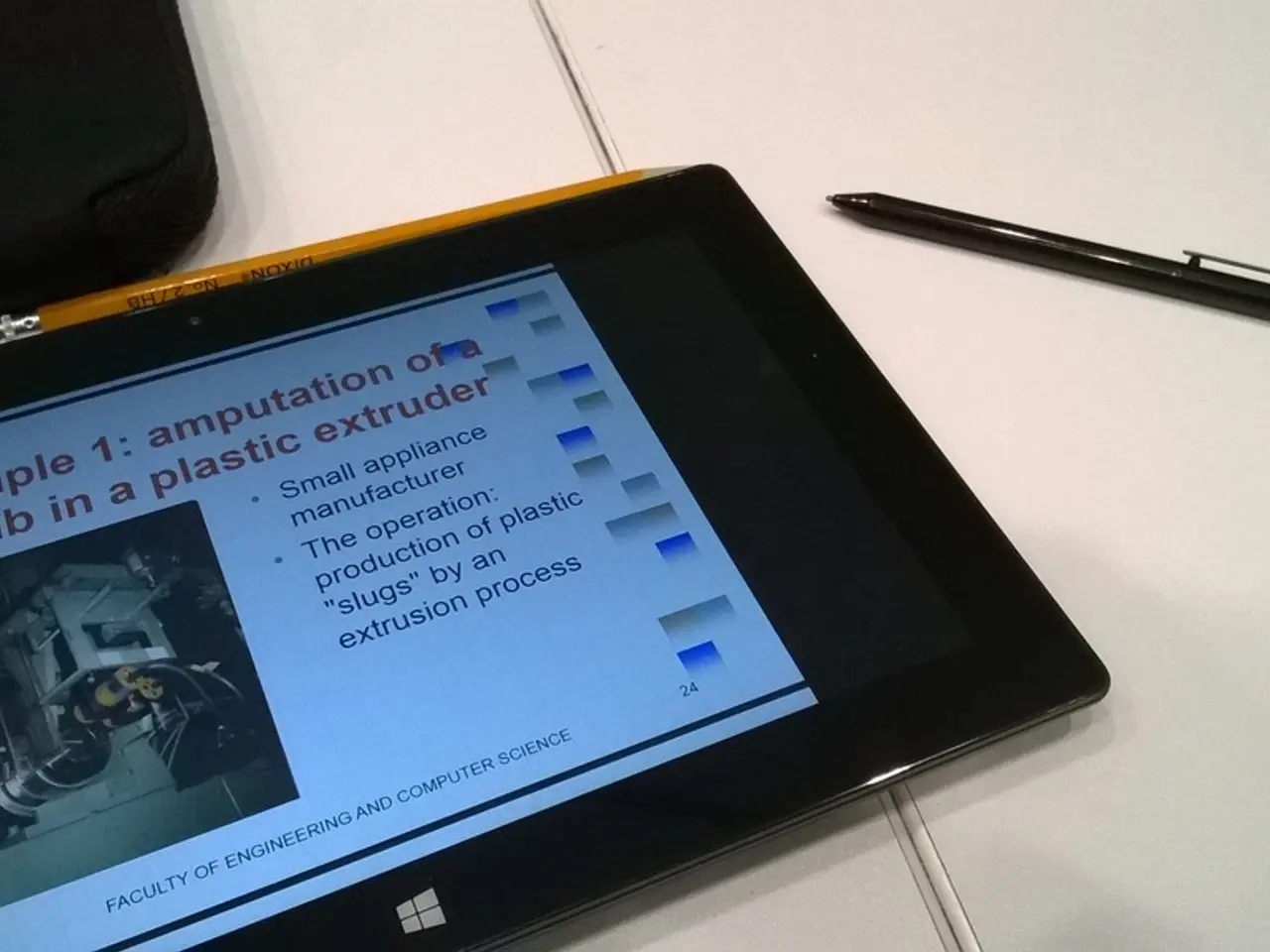Strategies Supported by Evidence for Organizing Your Daily Routine
In the pursuit of productivity, research has uncovered several strategies that can help individuals and teams maximize efficiency without increasing workload. Here are some key strategies to consider:
## Tackling Hard Tasks First
Known as the "Eat That Frog" strategy, this approach involves starting your day with the most challenging tasks while your energy levels are high. By completing the most critical tasks early, you can avoid procrastination and ensure that you have enough energy and focus for the tasks that require the most mental effort.
## Planning Around End-of-Day Fatigue
Scheduling tasks according to your energy levels throughout the day can help maintain consistent productivity. Most people experience a decline in productivity towards the end of the day, so it's wise to plan less demanding tasks for later. This strategy helps reduce burnout and improve overall efficiency.
## Multitasking Smarter
While traditional multitasking can be counterproductive, task-switching can be more effective if done strategically. This involves rapidly switching between related tasks that require similar mental resources. Multitasking can be beneficial if tasks are similar in nature, allowing for quick transitions and minimizing the time wasted on refocusing.
## Managing Collaboration Costs
Optimize team collaboration by limiting unnecessary meetings and using technology to facilitate seamless communication. By minimizing the time spent on collaboration overhead, teams can focus more on core tasks, thus increasing productivity.
## Utilizing Operational Transparency in Communication
Implement open and transparent communication channels to ensure that all team members are aware of ongoing tasks and goals. Transparency helps reduce confusion, aligns team efforts, and fosters accountability, leading to improved collaboration and productivity.
## Additional Strategies
- **Task Batching**: Group similar tasks together and complete them in dedicated time blocks. This technique improves focus, reduces mental fatigue, and streamlines workflow processes. - **Set Clear Goals and Priorities**: Establish clear objectives and prioritize tasks based on importance and urgency to maintain focus and momentum. - **Minimize Distractions**: Identify common distractions and implement strategies to eliminate them, such as turning off non-essential notifications or creating a distraction-free workspace.
By incorporating these strategies, you can significantly enhance your productivity without increasing your workload.
Interestingly, a study found that physicians who take on difficult patients learn to become more efficient than those who treat an easier caseload over a six-year period. However, the productivity of hospitalists falls dramatically when they are required to collaborate with specialists, with 20 percent of the time spent on the patient's medical chart being affected. Forty-five percent of this time is due to work sequencing, or the effect of interruptions by collaborators.
In the realm of scheduling, a study found that altering the way Italian appellate labor court judges schedule court hearings can increase efficiency in resolving cases. However, this scheduling method resulted in a slow resolution of cases in the Italian appellate labor courts.
In the realm of customer service, operational transparency, or showing customers every step, can lead to a higher score for the service if frequent updates are given towards the end of the delivery. Conversely, ER physicians are more likely to choose easier patients when they already have a lot of patients under their care, but this strategy does not pay off in the long run.
Lastly, food-safety inspectors are more likely to find fewer violations as the day progresses due to fatigue, with each subsequent hour resulting in 3.7% fewer citations per inspection. Focusing on completing a few tasks rather than simply pushing forward on many can lead to increased efficiency for many workers.
In conclusion, by employing these evidence-based strategies, individuals and teams can significantly boost their productivity without increasing their workload.
In the realm of self-improvement, adopting strategies such as task batching, setting clear goals, and minimizing distractions can contribute to personal growth and productivity. By structuring tasks to align with one's energy levels and levels of concentration, one can maintain a high level of productivity without feeling overwhelmed.
In an educational context, remaining adaptable and efficient, even when facing difficult tasks or challenges, is key to self-development. Just as physicians often become more efficient over time by taking on challenging cases, individuals can grow through facing and overcoming obstacles in their academic or professional pursuits.




